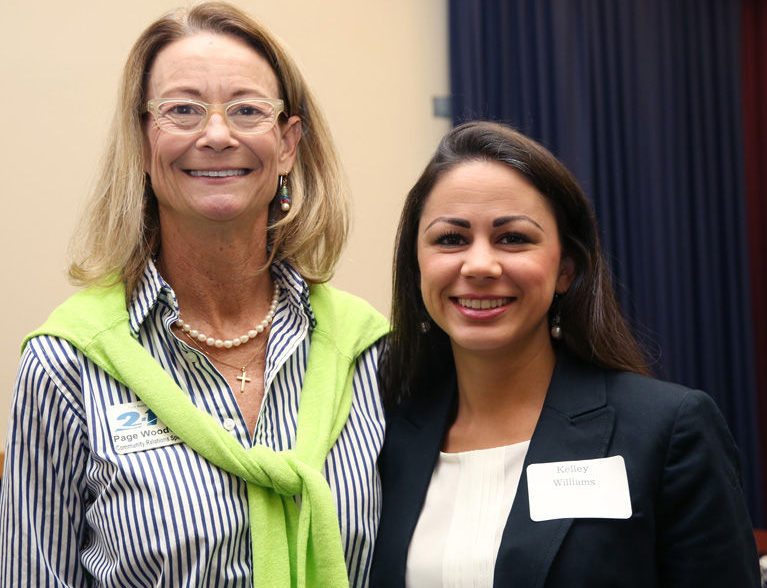
In the 50 years since President Lyndon Johnson first proposed his War on Poverty, this country has spent billions of dollars on programs and initiatives. At the second annual Symposium on Poverty and Hunger last week, Annabel Robertson, executive director of the host organization, Harvest Food and Outreach Center, posed the question, “Why do we still have poverty in America?”
The morning-long symposium at the Richardson Center at Indian River State College was introduced last year to establish a connection between the community and agencies that support individuals and families in need and create effective solutions by working together to facilitate change.
There are many contributing factors to consider, not the least of which is accurately measuring and defining poverty, said Harvest’s program director, Willie Finklin.
In addition to the official 1969 census definition of poverty, supplemental poverty levels – measuring the non-cash resources needed to actually meet basic needs – were introduced 40 years later.
“How do we measure needs?” asked Finklin. He noted that the official poverty rate merely measures access to three meals a day and is measured across the board, despite the obvious cost of living differences in cities nationwide.
On the other hand, the supplemental measure takes into consideration such needs as food, clothing, shelter and utilities, and does so based on variances in geographic areas, household makeup, and numerous other factors. Resources, such as income, social security, SNAP (food stamps), and school lunches are evaluated against such expenses as childcare, transportation, medical expenses and taxes.
“Food insecurity has a way of leaking into other areas,” said Finklin, noting that hunger remains a major problem, especially for children during school breaks and summer vacations. “How can a kid focus on his academics when he’s hungry?”
Robertson noted that individuals living in poverty have a noticeably increased risk of mental health issues, substance abuse, violent crime, child abuse and neglect and homelessness.
After playing a clip from the Science Channel’s Through the Wormhole series, which explored the differences in the brains of rich and poor children, she explained that research indicates children’s brains start off the same. However, the brains of children raised in poverty are at risk of growing more slowly when living in a constantly heightened hormonal state of “toxic stress.”
“The brain stops developing; those important parts, the hypothalamus, the frontal cortex. It’s a real physiological issue,” said Robertson. Highlighting its vicious cycle, she said poverty creates a lack of access to resources, which triggers an environment of toxic stress. The resulting physiological problems worsen the types of behaviors that cause poverty.
“If we don’t, as a community of care, address these issues, we’re never going to solve the issue of poverty,” added Robertson. “Poverty is a public health issue; it’s the biggest one facing this county today.”
Representatives from several providers spoke about their informational databases; some which are available at the provider level and others to the general public.
The Treasure Coast Homeless Service Council manages Client Track, a centralized Homeless Management Information System, which coordinates assessments based on critical needs.
Louise Hubbard, TCHSC executive director, explained that sharing one complete assessment among the 70 licensed, certified continuum-of-care agencies in the tri-county area eliminates duplicated records and services, and provides a basis for collaborative referrals.
Page Woodward, community relations specialist with 211 Palm Beach/Treasure Coast, and Kelley Williams, executive director of Whole Child Indian River, said their centralized resources are available to both the public and service providers.
Callers to the 211 community helpline and crisis hotline can receive guidance and referral support all day, every day.
The Whole Child Indian River website and mobile app connects families, based on their individual needs, to the programs and services of both non-private and private providers.
Before attendees broke off into discussion groups, Robertson said she would like to see the creation of a strategic plan to move forward in a collaborative manner adding, “It starts here; what starts here changes the world.”



